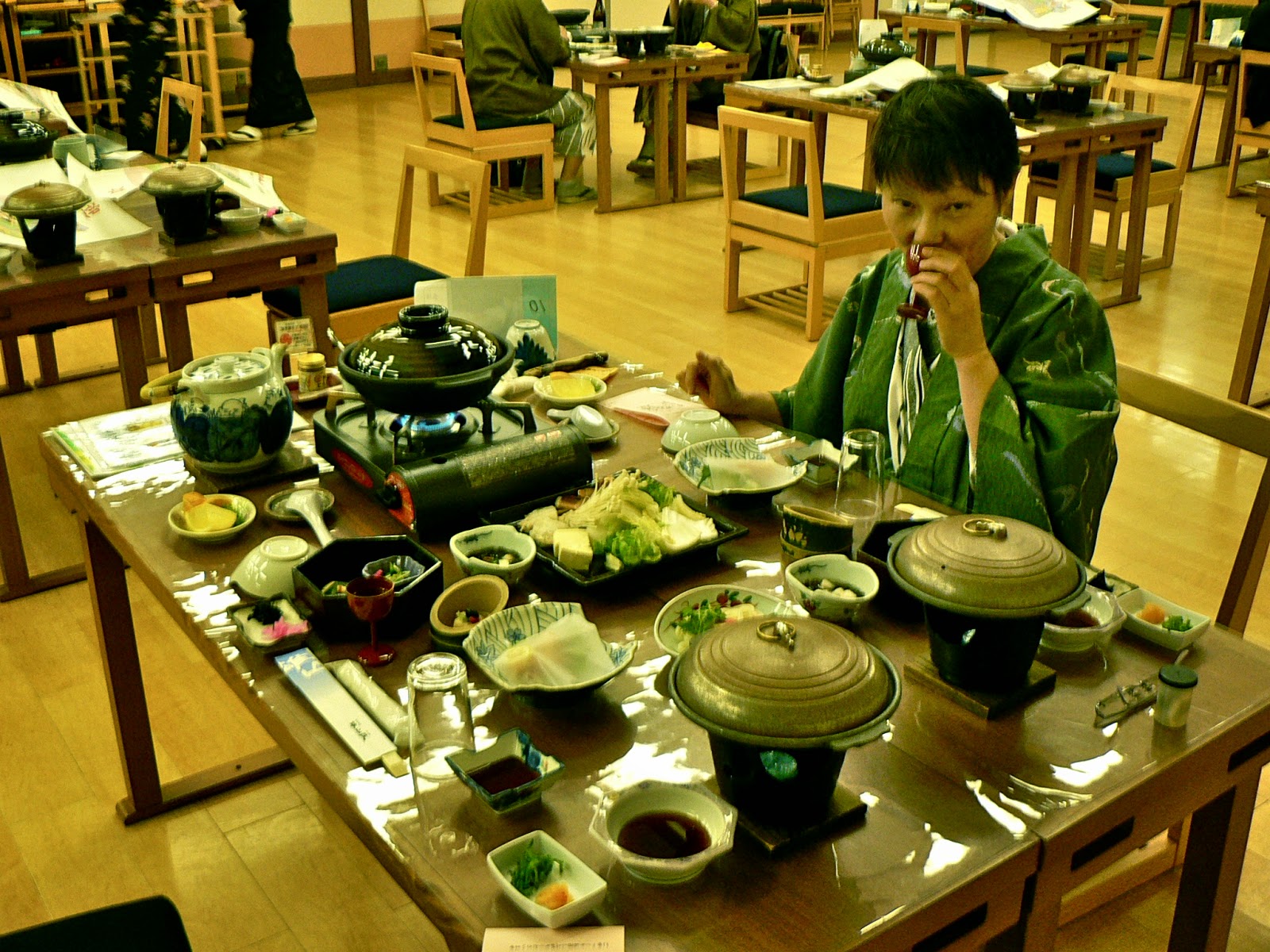 |
| udon lunch in Uji |
 |
| lunch time |
Uji City- Byōdō-in
 |
| Byōdō-in reflecting pond |
 |
| my copy |
 |
| Byōdō-in |
 |
| Murasaki Shikibu and Uji River |
 |
| Sei Shonagon |
Lake Biwa – Ogoto-onsen
 |
| before... |
 |
| ...after |
 |
| "dressed" for dinner |
 |
| dinner |
 |
| hot spring jacuzzi - Lake Biwa in the background |
Kyoto – Heian Shrine
 |
| Heian Shrine torii |
 |
| just for the scale of the thing |
 |
| main gate - typical vermilion trim and green tile roof |
 |
| Heian Garden - twisted trunk and branches look sort of like a dragon to me |
 |
| stepping stones across the pond |
 |
| islands represent a crane and a turtle representing longevity and happiness |
 |
| bridge framed in dry pampas grass |
 |
| pine needles are thinned out to maintain shape - top of the tree has been trimmed, but not the bottom yet |
 |
| exquisite landscaping of a Japanese garden with the basic elements of stone, water and trees |
 |
| manga addicts |
No comments:
Post a Comment